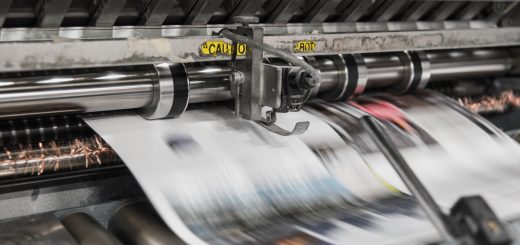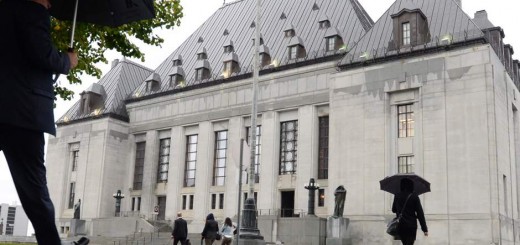Catch & Release: Redefining Hearsay Admissibility in R v Bradshaw

In June 2017, the Supreme Court of Canada (“the SCC”) ruled in R v Bradshaw that the test for using corroborative evidence to establish substantive reliability of hearsay evidence is a strict one. If it is being used to establish the reliability of a hearsay statement, the corroborative evidence must (a) go to the material aspects of the statement, and (b) show that “when considered as a whole and in the circumstances of the case … the only likely explanation for the hearsay statement is declarant’s truthfulness about, or the accuracy of… the statement” (R v Bradshaw, 2017 SCC 35, para 4 [Bradshaw]). If the corroborative evidence does not meet (a) or (b) or both, the dangers posed by the hearsay statement persist, and the hearsay statement cannot be admitted into evidence.
Bradshaw imposes a high bar on the parties attempting to use corroborative evidence. This post explains the reasons behind the Bradshaw decision. I argue that the case is an important one because it reveals a deep tension at play in the structure of Canadian evidence law. On one hand, the decision expresses support for putting more discretion in the hands of trial judges in managing hearsay admissibility issues. On the other hand, the decision creates strict criteria for judges wishing to rely on corroborative evidence to conclude that substantive reliability is established. This aspect of the decision reveals an impulse toward structuring decision-making around hearsay admissibility from the top down.
Facts
Bradshaw concerns the admissibility of hearsay evidence (video testimony) given by a Mr. Thielen (“Mr. T”) during the trial of a co-accused, Mr. Bradshaw (“Mr. B”). In 2009 in Alberta, two people were fatally shot. Mr. T came under suspicion for the murders and became the target of a Mr. Big investigation. During the investigation, Mr. T confessed to an undercover officer that he had killed one of the victims in question, and Mr. B had killed the other. When Mr. T re-enacted the murders for police during a videotaped session, he implicated Mr. B in both murders. Mr. T and the accused were each charged with two counts of first degree murder, and Mr. T pled guilty to second degree murder. Mr. T then refused to give sworn testimony at the accused’s trial. Hearsay is “an out-of-court statement tendered for the truth of its contents” (Bradshaw, para 1). Given that Mr. T could not be compelled to testify as a co-accused, his video re-enactment to police was inadmissible hearsay. Unable to access their key evidence viva voce, the Crown sought to admit the video recording of Mr. T’s re-enactment under the principled exception to the hearsay rule. The principled exception will allow hearsay evidence in if the offering party can demonstrate that the evidence is sufficiently necessary and reliable. Because Mr. T could not be compelled to testify, the necessity of the re-enactment evidence was made out, so only reliability remained at issue (Bradshaw, para 25).
Procedural Pathway
At the trial level, the Crown relied on corroborative evidence to show that Mr. T’s video re-enactment met the criteria for threshold reliability, including forensic evidence verifying that Mr. T’s description of the murders was accurate. At trial, Justice Greyell admitted the video re-enactment largely by relying on the corroborative information to establish reliability. A jury convicted Mr. B at trial on two counts of first degree murder. On appeal, the defence successfully argued that Justice Greyell had erred in relying on the corroborative evidence to establish that the video was reliable. The Court of Appeal for British Columbia (“BCCA”) set aside the murder convictions and ordered a new trial. The Crown then appealed to the SCC.
At the SCC, the majority agreed with the BCCA and dismissed the Crown’s appeal. The SCC clarified that corroborative evidence may only be used to establish substantive reliability “if it shows, when considered as a whole and in the circumstances of the case, that the only likely explanation for the hearsay statement is the declarant’s truthfulness about, or the accuracy of, the material aspects of the statement” (Bradshaw, para 4). Justice Moldaver, with Justice Côté concurring, dissented, arguing that the trial judge had made no error of law and that his decision was entitled to deference (Bradshaw, para 102).
Hearsay Law in a Nutshell
Yes But: The Principled Exception to the Hearsay Rule
Hearsay evidence will be admissible under the principled exception to the hearsay rule if it can be shown to be sufficiently necessary and reliable. Necessity is typically made out if the declarant is not reasonably available, e.g. if they are deceased, incompetent, untraceable, or if testifying would be unacceptably traumatic. To make out reliability, a trial judge applying the principled approach will look for evidence of threshold reliability: balance-based evidence showing that the hearsay is “sufficiently reliable to overcome the dangers that arise from the difficulty of testing it” (R v Khelawon, 2006 SCC 57, para 49 [Khelawon]).
Substantive and Procedural Reliability
In Bradshaw, the SCC clarified that there are two methods for establishing threshold reliability: substantive reliability and procedural reliability (Bradshaw, para 27). Procedural reliability addresses the court’s core concern about hearsay: the fact that it cannot be tested through cross-examination. In procedural reliability, hearsay evidence will be let in if there is a “functional substitute for trial testing” present (Khelawon, para 63). A partial example would be a complete and unadulterated videotaped statement. The trial judge may be able to use the videotape to observe the witness’s demeanour and assess their accuracy and sincerity, a key component of the cross-examination process which is lost when admitting hearsay evidence.
Alternately, reliability may be made out through establishing substantive reliability. This is made out when the statement is considered “inherently trustworthy,” providing such a high degree of comfort to the trier(s) of fact that even a “sceptical caution” would look on the statement as reliable (Bradshaw, para 71). An example from the case law of substantive reliability is a natural, swift and specific utterance by a young child, who lacks a motive to lie and has no anticipation of penal consequences, implicating the accused in wrongdoing (R v Khan, [1990] SCR 531). In the eyes of the court, this type of evidence is prima facie reliable enough to be admitted despite the fact that it is hearsay.
In Bradshaw, the Crown sought to admit Mr. T’s video re-enactment through a third pathway: a combination of procedural and substantive reliability indicia. Though uncommon, this option for establishing reliance is available for submitting parties willing to take it on (Bradshaw, para 32). At trial, Justice Greyell found numerous examples of both procedural and substantive reliability. The re-enactment was voluntary, free-flowing, incriminating and made after Mr. T had received legal advice. The statement was also corroborated by extrinsic evidence (Bradshaw, para 59). On these grounds, combined with the corroborative evidence, Justice Greyell let the evidence in.
The Decision
On appeal, things got sticky. The BCCA found that Justice Greyell relied too heavily on the corroborative evidence in deciding that the hearsay video was reliable. The corroborative evidence included forensic evidence that confirmed Mr. T’s detailed descriptions of the murders, and evidence that Mr. T had accurately described the weather on the night in question (Bradshaw, para 61). The BCCA pointed out that while submitting parties are entitled to rely on corroborative evidence to show threshold reliability, the corroborative evidence offered by the Crown did not actually implicate Bradshaw in the murders. In fact, the corroborative details were equally consistent with the possibility that Mr. T was lying about Bradshaw’s participation. Several additional facts of the case supported this alternate explanation. First, Mr. T refused to take the stand at Mr. Bradshaw’s trial, thus depriving the trial judge of the opportunity to assess his sincerity. Second, Mr. T gave inconsistent accounts of Bradshaw’s involvement in the murders (Bradshaw, para 66). Third, Mr. T had a significant motive to lie to reduce his own culpability (Bradshaw, para 67). Finally, Mr. T was a Vetrovec witness, one who “[could not] be trusted due to his unsavoury character” (Bradshaw, para 69). [Vetrovec witnesses have been discussed in a previous post.]
Majority
Given these facts, both the BCCA and the SCC believed there was a strong possibility that Mr. T had lied about Bradshaw in his video statement. Key to the decision was the fact that both courts continued to harbour suspicions about the veracity of Mr. T’s evidence despite the presence of the corroborative material. According to the SCC, this meant that the corroborative information was unhelpful in assisting the trial judge in assessing reliability. In essence, the corroborative evidence failed because it was unable to eliminate alternative explanations for Mr. T’s statement. The purpose of admitting corroborative evidence is to establish the reliability of the hearsay statement itself. If the corroborative evidence is consistent with the idea that the statement is true, but is also consistent with the idea that the statement is false, it adds nothing of value to the trial process. In fact, it risks jeopardizing the trial by distracting and/or misleading the finder(s) of fact. To that end, the SCC reiterated its ruling in Khelawon that hearsay is sufficiently reliable “if it overcome[s] the dangers that arise from the difficulty of testing it” (Bradshaw, para 26). The specific hearsay danger posed by Mr. T’s evidence was that Mr. T was lying (as opposed to being genuinely mistaken, an equal but different concern). Given that the danger was not overcome by the corroborative evidence—it was equally likely that Mr. T had been lying even given the corroboration—it also failed because it did not eliminate the dangers posed by the hearsay evidence.
Ultimately, the SCC clarified that the corroborative evidence would have only been useful to the trial judge if it demonstrated that the only likely explanation for the video statement was Mr. T’s truthfulness about Mr. Bradshaw’s participation (Bradshaw, para 4). Essentially, corroborative evidence should only be used if it significantly curtails—indeed almost eliminates—the likelihood that the hearsay statement is inaccurate. To that end, the SCC said that trial judges must consider alternative (even speculative) explanations that might account for the hearsay statement, before letting it in (Bradshaw, para 80).
This is a high bar for the use of corroborative evidence. What are the rationales behind it? One reason why the bar is set high for corroborative evidence is because using hearsay statements in court is inherently risky business. One way to understand hearsay exceptions is to think of them as attempts to justify the elimination of cross-examination from the trial process. The SCC clarified that if testing through cross-examination could have revealed anything at all about the veracity of the tendered statement —if the hearsay statement could have fallen apart or changed in any way during cross-examination—“the hearsay dangers persist,” and the statement should not be admitted (Bradshaw, para 47). The SCC further clarified that the corroborative evidence must go to the truthfulness or accuracy of the material aspects of the statement (Bradshaw, para 4). Corroborative evidence that goes to establishing tangential or immaterial aspects of the hearsay statement—aspects which the submitting party is not relying on as truth—is irrelevant when it comes to the reliability assessment.
Dissent
Justice Moldaver, with Justice Côté concurring, dissented. He argued that the combined indicia of substantive and procedural reliability in the video re-enactment were enough for the evidence to pass the threshold reliability test (Bradshaw, para 101). According to the dissenting Justices, the combined effect of these indicia provided “powerful support” for the trustworthiness of Mr. T’s statement (Bradshaw, para 137). Justice Moldaver, a powerful voice in criminal law matters at the SCC, reminded readers that the concept of “procedural safeguards” does not change depending on whether one is inside or outside the courtroom. “There is no principled distinction,” he wrote, “between safeguards in place at the time of the hearsay statement was made and safeguards available at trial” (Bradshaw, para 125). Fundamentally, the dissenting Justices disagreed with the majority that imposing a strict test for the use of corroborative evidence was helpful to the trial process. Justice Moldaver argued that the majority created “a threshold test within a threshold test,” unnecessarily complicating the analysis and excluding potentially valuable extrinsic evidence from the finder(s) of fact (Bradshaw, para 120).
Catch & Release: Structuring Judicial Thinking
Bradshaw is interesting because it reveals a source of tension in the structure of Canadian evidence law. Specifically, it demonstrates a continued feeling of uneasiness among higher courts in giving trial judges ‘free rein’ over the management of evidentiary exceptions. On one hand, the decision articulates support for principled evaluations of hearsay evidence. This is notable because the principled approach tends to place more discretionary decision-making power in the hands of trial judges. On the other hand, the majority reasons set out a new test designed to structure and limit the scope of that same discretion. I argue that in doing so, the reasons recapitulate the deep structural anxiety embedded in the common law of evidence around uncontrolled judicial thinking.
Historically, hearsay exceptions in Canadian evidence law have been governed by categorical exceptions. These exceptions described situations in which the court believed it would be highly unlikely for the declarant to make a mistake or lie, such as a dying declaration. The exceptions ostensibly provided the court with sufficient indicia of necessity and reliability—the court’s core concerns with hearsay evidence—simply by virtue of the type of statement they were, so they were automatically admissible. The trouble with the categorical approach is that it tended to produce more problems than it endeavoured to fix. Over time, the categories were shown to be both over- and under-inclusive. Evidence that “smacked of trustworthiness” could be excluded because it did not fit a categorical exception, while shoddy evidence could be let in through a category despite having unresolved problems with necessity and/or reliability. In Khan, the SCC began to articulate the principled approach described earlier: hearsay evidence will be admitted if it is shown to be (a) necessary and (b) reliable, regardless of whether it fit one of the historical categorical exceptions.
The different approaches to managing hearsay exceptions reveal different assumptions at work beneath the common law system of evidence. Both approaches are sound in their own way. The categorical approach is an attempt to mitigate or limit the potential for error in human decision-making by heavily prescribing when and how hearsay may be admitted. Policy-wise, the categorical exceptions were intended to offer guidance, minimize erroneous admissions, guard against bias, and provide predictability and stability to evidence law (although the predictability point is debatable, as the categorical system is notoriously complex). By contrast, the principled approach ushered in by Khan puts much more discretion in the hands of trial judges. The principled approach was, among other things, an attempt to return to the principled foundations of evidence law: all evidence should be admitted if it is sufficiently necessary and reliable to be depended upon in court. Arguably, the emergence of the principled approach also signalled a resurgence of faith in individual decision-making among trial judges. In contrast to the categorical option, the principled approach leans more heavily on the trial judge’s discretion: it trusts him or her to apply generalized principles, parse hearsay dangers for individual pieces of evidence, evaluate constitutional implications, and make decisions about admissibility without detailed instructions from above.
The Bradshaw decision is interesting because it shows that Canadian evidence law shifting uneasily between these two poles. On the one hand, the decision reflects a desire to put more discretion in the hands of trial judges and to expand the boundaries of judicial decision-making. This impulse is beneficial in the context of hearsay because it enables trial judges to make admissibility decisions that are more fine-tuned to the specific facts of the individual case. On the other hand, the majority decision imposes new constraints on the trial judge’s discretion. In doing so, it belies the same anxiety that has historically informed the categorical approach: an impulse to structure trial judges’ thinking from above in the name of reducing judicial error.







Join the conversation